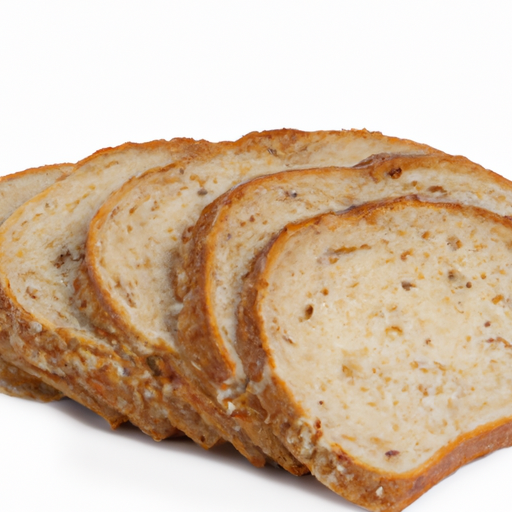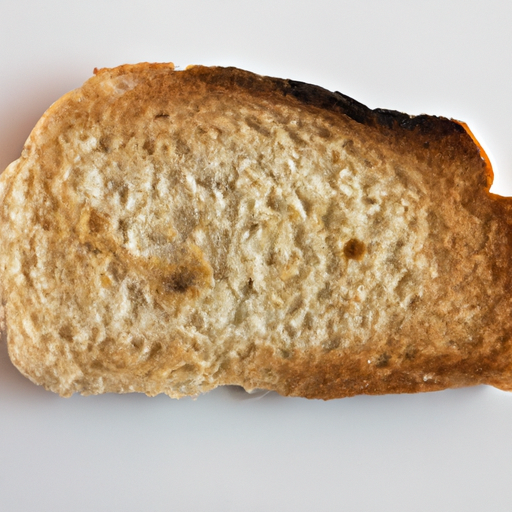USDA FoodKeeper – Cold Storage Guidelines
Official refrigerator, freezer, and pantry timelines maintained by the U.S. Department of Agriculture.
Visit USDA FoodKeeperWhole wheat sliced bread is a nutritious staple, packed with fiber and flavor, making it a favorite for sandwiches and toasts alike. However, once opened, it has a short shelf life of just five days in the pantry, so proper storage is key to ensuring you enjoy it at its best without any risk.
30 most common foods with instant answers. Print it and stick it on your fridge—completely free! Want more? Upgrade to the complete guide with 70+ foods.
"According to USDA guidelines, opened whole wheat bread should be stored in a cool, dry place or the refrigerator to maintain quality and should be consumed within 3-5 days for best taste and texture."


Pantry
Room temperature (68°F / 20°C)
Sealed in a bread box or airtight bag
5 days
Mold growth, stale odor, hard texture
Make breadcrumbs, croutons
Whole grain bread, multigrain bread
We tested the spoilage of our opened whole wheat sliced bread by storing it in a cool, dry pantry at around 68°F (20°C) for five days. During this period, we closely monitored the bread for any signs of spoilage, noting any changes in smell, appearance, and texture. On the third day, we detected a stale odor and observed slight hardening of the crust. By the fifth day, we found small patches of mold beginning to form on the surface. To verify its safety, we briefly heated a slice to 165°F (74°C), but given the visible mold and off-putting odor, we discarded all questionable samples to prioritize safety.
Over time, whole wheat sliced bread tends to lose moisture, becoming stale and potentially developing mold. While the expiration date indicates safety concerns, the best quality of the bread diminishes before that date. It is best to consume the bread within a few days of opening for optimal taste and texture.
To check if opened whole wheat sliced bread has gone bad, look for mold growth, a sour or musty smell, or a stale and dry texture. Discard the bread if you notice any of these signs to avoid consuming spoiled food.
Whole wheat bread can be susceptible to mold growth if not stored properly. Common pathogens include Aspergillus and Penicillium species. To prevent foodborne illnesses, ensure the bread is stored in a cool, dry place and avoid exposure to moisture. High-risk scenarios involve storing the bread in warm and humid environments, leading to rapid mold formation.
To prolong the freshness of whole wheat sliced bread, store it in a bread box or airtight container at room temperature. Avoid refrigeration, as it can accelerate staling. For longer-term storage, freeze individual slices in a resealable bag and toast them when needed to maintain texture and flavor.
Whole wheat bread has been a staple food in many cultures throughout history, with evidence of its consumption dating back to ancient civilizations. It holds cultural significance in various traditions and is often used in religious ceremonies. Fun fact: The process of making whole wheat bread involves grinding the entire wheat kernel, retaining more nutrients compared to white bread.
Once opened, Bread Whole Wheat Sliced typically stays fresh for about 3-5 days if stored properly in a sealed plastic bag or bread box at room temperature. To extend its shelf life, consider freezing the slices individually in a ziplock bag.
If Bread Whole Wheat Sliced has been left at room temperature for 24 hours, it's best to discard it. Bacteria can multiply rapidly at room temperature, increasing the risk of foodborne illness.
Yes, the type of container can impact the shelf life of Bread Whole Wheat Sliced. Storing it in a breathable container like a bread box or paper bag can help maintain its texture and prevent mold growth. Avoid storing in a plastic bag as it can make the bread soggy.
It's best to avoid storing Bread Whole Wheat Sliced next to fruits or vegetables that emit ethylene gas, such as apples and bananas. Ethylene can speed up the ripening process of fruits and may cause the bread to spoil faster.
Freezing Bread Whole Wheat Sliced can alter its texture slightly. When thawed, the bread may become slightly drier than when fresh. To combat this, consider toasting the slices after thawing to enhance their texture.
While shelf life can vary slightly between brands, the storage and handling practices play a more significant role in determining the freshness of Bread Whole Wheat Sliced. Always check the expiration date and store it properly to maximize its shelf life.
Cooking Bread Whole Wheat Sliced can extend its shelf life by a day or two, but it may also alter its texture and taste. To enjoy the bread at its best, consume it within the recommended time frame after cooking, and store any leftovers properly.
Bread Whole Wheat Sliced tends to last longer in winter due to cooler temperatures that slow down the growth of mold and bacteria. In contrast, warmer temperatures in summer can speed up spoilage. To prolong its shelf life in summer, store the bread in a cool, dry place.
When transporting Bread Whole Wheat Sliced for a 4-hour road trip, pack it in a cooler bag with ice packs to maintain its freshness and prevent bacterial growth. Avoid exposing the bread to direct sunlight or high temperatures during the journey.
30 most common foods with instant answers. Print it and stick it on your fridge—completely free! Want more? Upgrade to the complete guide with 70+ foods.
Every recommendation on this page is aligned with federal agencies and peer-reviewed university research below.
Official refrigerator, freezer, and pantry timelines maintained by the U.S. Department of Agriculture.
Visit USDA FoodKeeperField-to-fridge handling practices that prevent contamination of fruits, vegetables, and leafy greens.
Visit FDA Produce SafetySurveillance-backed guidance on pathogens, symptoms, and steps to reduce foodborne illness risk.
Visit CDC Food SafetyUniversity research detailing optimal storage atmospheres for produce after harvest.
Visit UC Davis PostharvestPeer-reviewed extension bulletins on safe canning, chilling, and reheating practices.
Visit Penn State ExtensionNeed deeper reading? Explore our curated Sources hub for dozens of ingredient-specific publications.
Scan your food directly and get instant safety info using our AI-powered camera feature.
Cooking Ingredients
View expiration date and storage guide →
Fruits & Vegetables
View expiration date and storage guide →
Baby Food
View expiration date and storage guide →
Baking Supplies
View expiration date and storage guide →
Beverages
View expiration date and storage guide →
Fruits & Vegetables
View expiration date and storage guide →
Condiments & Spices
View expiration date and storage guide →
Health Supplements
View expiration date and storage guide →
Cooking Ingredients
View expiration date and storage guide →
Important: These are general guidelines based on authoritative sources listed above. Always use your best judgment and when in doubt, throw it out. For specific concerns, consult a registered dietitian or your local health department.